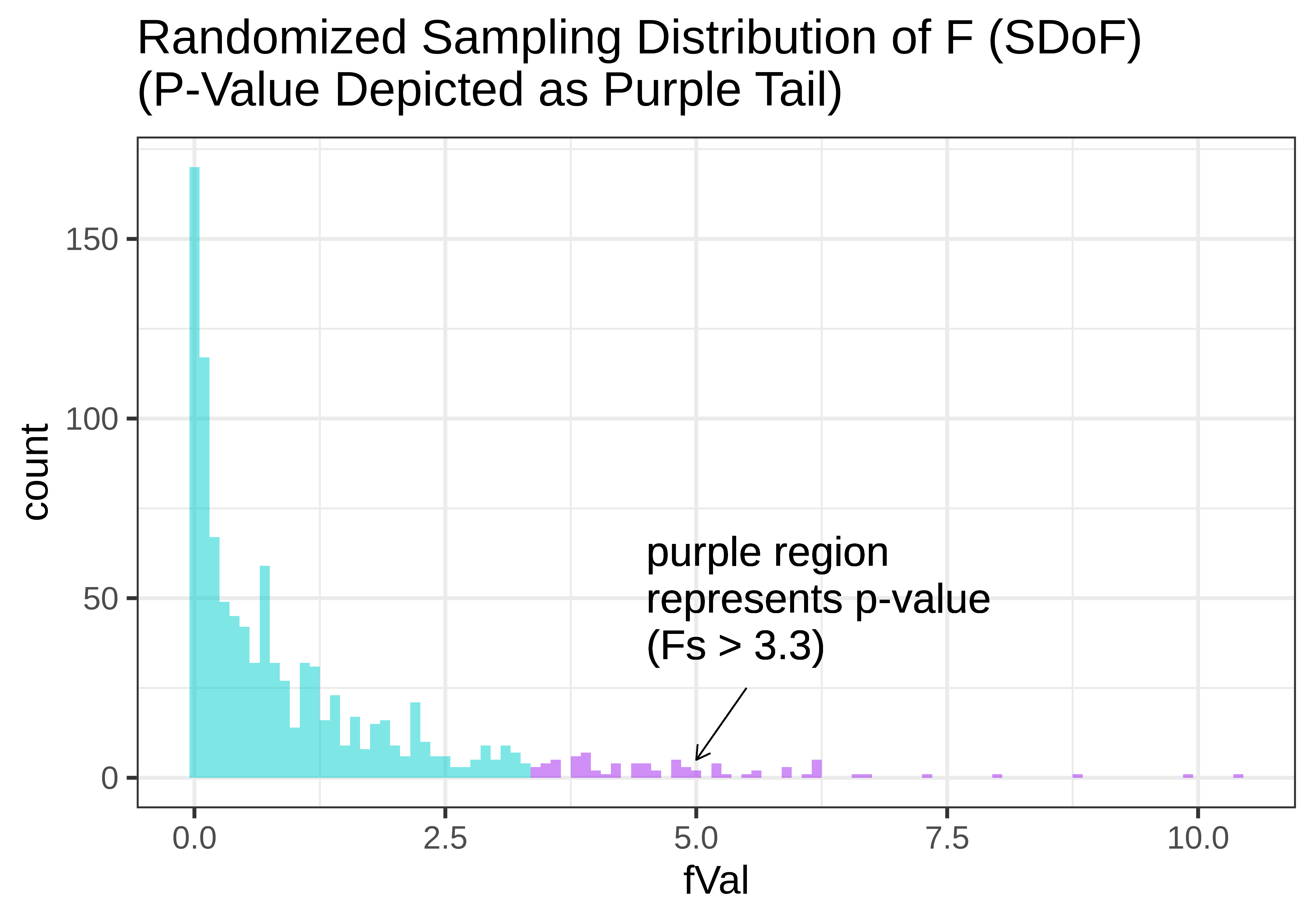F-Distribution
The F-Distribution is a probability distribution that models the sampling distribution of F under the empty model (the null hypothesis that there is no effect of the explanatory variable); this theoretical distribution takes into account both model degrees of freedom and error degrees of freedom.
Another way of saying this, is that the F-Distribution is a sampling distribution that represents the distribution of all the possible F values we would expect to observe if the empty model (𝛽1 = 0) were the true model of the Data Generating Process (DGP). We can compare the value of our sample F statistic to the F-Distribution to help us figure out whether our sample was likely to have come from a DGP where the empty model is true.
The shape and spread of the F-Distribution slightly varies depending on the model degrees of freedom and error degrees of freedom.
Below is an example of the F-Distribution generated via randomized sampling in R.

Related Articles
F test
F test is a method for using the F ratio and F distribution to compare statistical models.f() or fVal()
The f() function (and, similarly, the fVal() function) will calculate the F value for a model. Example 1: Below are various methods for indexing the model in the argument of the f() function (they will all produce the same output). For any of these, ...t-test
The t-test uses the t-distribution (a sampling distribution of t) as a method of model comparison when you are evaluating a complex model against the empty model. It is very similar to using the F-distribution for model comparison, and, actually, ...distribution
Distribution is the pattern of variation in a variable or set of variables.distribution triad
Distribution triad means sample distribution, DGP/population distribution and sampling distribution.